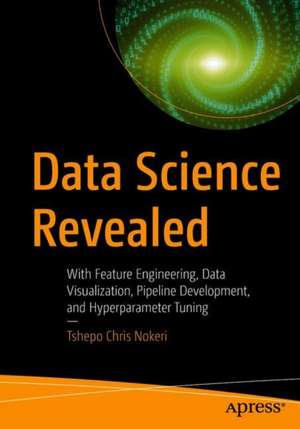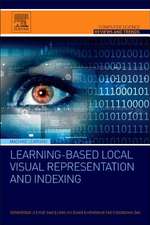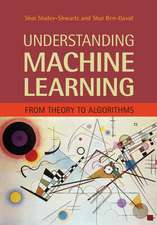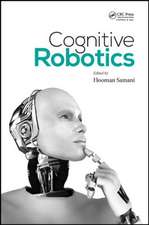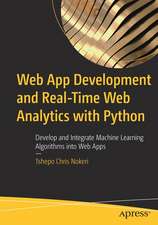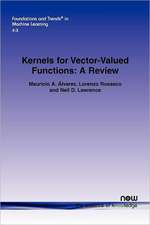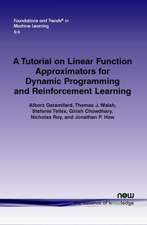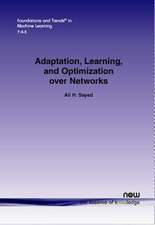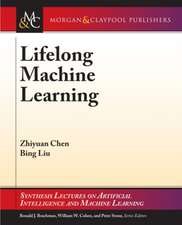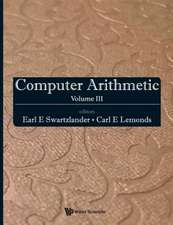Data Science Revealed: With Feature Engineering, Data Visualization, Pipeline Development, and Hyperparameter Tuning
Autor Tshepo Chris Nokerien Limba Engleză Paperback – 7 mar 2021
The book covers parametric methods or linear models that combat under- or over-fitting using techniques such as Lasso and Ridge. It includes complex regression analysis with time series smoothing, decomposition, and forecasting. It takes a fresh look at non-parametric models for binary classification (logistic regression analysis) and ensemble methods such as decision trees, support vector machines, and naive Bayes. It covers the most popular non-parametric method for time-event data (the Kaplan-Meier estimator). It also covers ways of solving classification problems using artificial neural networks such as restricted Boltzmann machines, multi-layer perceptrons, and deep belief networks. The book discusses unsupervised learning clustering techniques such as the K-means method, agglomerative and Dbscan approaches, and dimension reduction techniques such as Feature Importance, Principal Component Analysis, and Linear Discriminant Analysis. And it introduces driverless artificial intelligence using H2O.
After reading this book, you will be able to develop, test, validate, and optimize statistical machine learning and deep learning models, and engineer, visualize, and interpret sets of data.
What You Will Learn
- Design, develop, train, and validate machine learning and deep learning models
- Find optimal hyper parameters for superior model performance
- Improve model performance using techniques such as dimension reduction and regularization
- Extract meaningful insights for decision making using data visualization
Who This Book Is For
Beginning and intermediate level data scientists and machine learning engineers
Preț: 260.53 lei
Preț vechi: 325.66 lei
-20% Nou
Puncte Express: 391
Preț estimativ în valută:
49.86€ • 54.14$ • 41.88£
49.86€ • 54.14$ • 41.88£
Carte disponibilă
Livrare economică 01-15 aprilie
Preluare comenzi: 021 569.72.76
Specificații
ISBN-13: 9781484268698
ISBN-10: 1484268695
Pagini: 252
Ilustrații: XX, 252 p. 95 illus.
Dimensiuni: 178 x 254 mm
Greutate: 0.48 kg
Ediția:1st ed.
Editura: Apress
Colecția Apress
Locul publicării:Berkeley, CA, United States
ISBN-10: 1484268695
Pagini: 252
Ilustrații: XX, 252 p. 95 illus.
Dimensiuni: 178 x 254 mm
Greutate: 0.48 kg
Ediția:1st ed.
Editura: Apress
Colecția Apress
Locul publicării:Berkeley, CA, United States
Cuprins
Chapter 1: An Introduction to Simple Linear Regression Analysis.- Chapter 2: Advanced Parametric Methods.- Chapter 3: Time Series Analysis.- Chapter 4: High-Quality Time Series Analysis.- Chapter 5: Logistic Regression Analysis.- Chapter 6: Dimension Reduction and Multivariate Analysis Using Linear Discriminant Analysis.- Chapter 7: Finding Hyperplanes Using Support Vectors.- Chapter 8: Classification Using Decision Trees.- Chapter 9: Back to the Classics.- Chapter 10: Cluster Analysis.- Chapter 11: Survival Analysis.- Chapter 12: Neural Networks.- Chapter 13: Machine Learning Using H2O.
Notă biografică
Tsheop Chris Nokeri harnesses advanced analytics and artificial intelligence to foster innovation and optimize business performance. He has delivered complex solutions to companies in the mining, petroleum, and manufacturing industries. He completed a bachelor’s degree in information management and graduated with an honors degree in business science at the University of the Witwatersrand on a TATA Prestigious Scholarship and a Wits Postgraduate Merit Award. He also was awarded the Oxford University Press Prize.
Textul de pe ultima copertă
Get insight into data science techniques such as data engineering and visualization, statistical modeling, machine learning, and deep learning. This book teaches you how to select variables, optimize hyper parameters, develop pipelines, and train, test, and validate machine and deep learning models. Each chapter includes a set of examples allowing you to understand the concepts, assumptions, and procedures behind each model.
The book covers parametric methods or linear models that combat under- or over-fitting using techniques such as Lasso and Ridge. It includes complex regression analysis with time series smoothing, decomposition, and forecasting. It takes a fresh look at non-parametric models for binary classification (logistic regression analysis) and ensemble methods such as decision trees, support vector machines, and naive Bayes. It covers the most popular non-parametric method for time-event data (the Kaplan-Meier estimator). It also covers ways of solving classification problems using artificial neural networks such as restricted Boltzmann machines, multi-layer perceptrons, and deep belief networks. The book discusses unsupervised learning clustering techniques such as the K-means method, agglomerative and Dbscan approaches, and dimension reduction techniques such as Feature Importance, Principal Component Analysis, and Linear Discriminant Analysis. And it introduces driverless artificial intelligence using H2O.
After reading this book, you will be able to develop, test, validate, and optimize statistical machine learning and deep learning models, and engineer, visualize, and interpret sets of data.
The book covers parametric methods or linear models that combat under- or over-fitting using techniques such as Lasso and Ridge. It includes complex regression analysis with time series smoothing, decomposition, and forecasting. It takes a fresh look at non-parametric models for binary classification (logistic regression analysis) and ensemble methods such as decision trees, support vector machines, and naive Bayes. It covers the most popular non-parametric method for time-event data (the Kaplan-Meier estimator). It also covers ways of solving classification problems using artificial neural networks such as restricted Boltzmann machines, multi-layer perceptrons, and deep belief networks. The book discusses unsupervised learning clustering techniques such as the K-means method, agglomerative and Dbscan approaches, and dimension reduction techniques such as Feature Importance, Principal Component Analysis, and Linear Discriminant Analysis. And it introduces driverless artificial intelligence using H2O.
After reading this book, you will be able to develop, test, validate, and optimize statistical machine learning and deep learning models, and engineer, visualize, and interpret sets of data.
You will:
- Design, develop, train, and validate machine learning and deep learning models
- Find optimal hyper parameters for superior model performance
- Improve model performance using techniques such as dimension reduction and regularization
- Extract meaningful insights for decision making using data visualization
Caracteristici
Covers the parametric, ensemble, and the non-parametric methods Presents techniques to improve model performance in pre- and post-training Summarizes H2O driverless AI and automatic forecasting using Prophet
